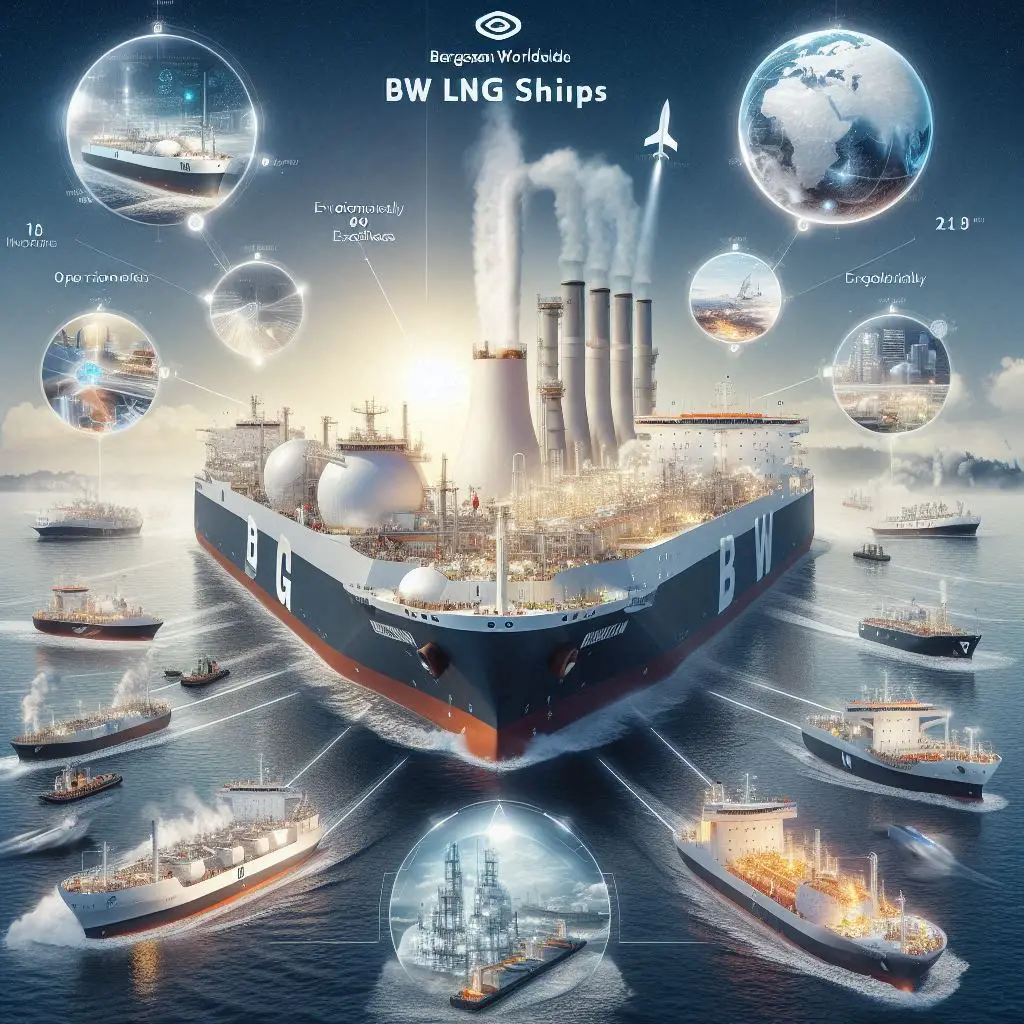
BW LNG Ships
In this exploration, I delve into the evolution of BW LNG ships, assessing their design breakthroughs, operational excellence, environmental issues, and possibilities.
Introduction:
Throughout the history of the LNG transportation sector, BW (Bergesen Worldwide) LNG ships have been instrumental in defining the industry across the world. Liquefied natural gas (LNG) is becoming an increasingly environmentally friendly alternative to conventional energy sources. As a result, BW's fleet of LNG carriers has developed to meet the rising need for transportation solutions that are both efficient and sustainable.
BW LNG Ships During Their Evolution:
Since the beginning of its adventure in the LNG transportation industry, BW has been dedicated to both innovation and quality. The firm has, during its existence, created several LNG carriers that are technologically sophisticated, therefore establishing new benchmarks for safety, efficiency, and environmental performance. Beginning in the early days of LNG transportation and continuing up to the current day, BW has made consistent investments in research and development to significantly improve the capabilities of its fleet.
The development of BW LNG ships has been marked by breakthroughs in vessel design, propulsion systems, and cargo confinement technologies. These developments contributed to the evolution of the ships. BW boats have been able to operate more effectively and reliably in a variety of environments as a result of the incorporation of innovative features like dual-fuel engines, new hull designs, and integrated automation systems. Furthermore, the strategic alliances and collaborations that the firm has formed have made it easier for the company to use cutting-edge technology, which has ensured that BW continues to be at the forefront of the LNG shipping sector.
Superiority in Operational Tasks:
Both their operational expertise and their dedication to safety have earned BW LNG ships a well-deserved reputation. Through the implementation of rigorous training programs, tough maintenance procedures, and comprehensive safety management systems, BW vessels can guarantee that they meet the highest possible operational performance criteria. From loading ports to receiving terminals, BW personnel are prepared with the knowledge and competence required to handle complicated logistics and guarantee the safe and efficient transportation of LNG cargo. This includes the ability to ensure that the cargo is transported between terminals.
The handling of cargo, the optimization of routes, and the control of risks are among the most important operational factors for BW LNG ships. By using cutting-edge monitoring and control technologies, BW boats can maximize the efficiency of cargo loading and distribution, limit the amount of fuel they use, and drastically reduce their effect on the environment. Additionally, the resilience of BW's operations against possible dangers and obstacles is improved by the use of proactive risk mitigation measures. These measures include emergency response exercises and contingency planning programs.
Leadership on Environmental Matters:
As part of its commitment to environmental sustainability, BW strives to reduce the ecological impact that its activities leave behind. Measures to decrease emissions, save resources, and safeguard marine ecosystems are implemented by the corporation as part of its Environmental Management System (EMS), which is an acronym for environmental management system. The goal of BW is to reduce the negative effect that its fleet has on the environment and to contribute to the worldwide effort to battle climate change. This will be accomplished by investing in technologies that are energy-efficient, alternative fuels, and pollution abatement systems.
Enhancements and Upcoming Projects:
Even while BW LNG ships have made notable advancements in environmental stewardship, operational effectiveness, and innovative design, there is always room for improvement. Looking forward, several sectors provide chances for more innovation and improvement.
-Advanced Propulsion Technologies: Using advanced propulsion technologies may help cut emissions and increase fuel economy. The exploration of substitute fuels like ammonia, hydrogen, or biofuels has the potential to reduce the carbon footprint of LNG shipping operations. Furthermore, propulsion system innovations like fuel cells and hybrid solutions might improve vessel efficiency and environmental sustainability even further.
-Automation and Digitalization: By using these technologies, vessel operations may be completely transformed and real-time monitoring, predictive repair, and autonomous navigation made possible. Optimizing route planning, cargo management, and energy usage via the integration of artificial intelligence, data analytics, and Internet of Things (IoT) technologies may improve operational efficiency and safety.
-Green Infrastructure Development: To support LNG bunkering and shore power facilities, cooperation between port authorities, terminal operators, and government agencies may help to build green infrastructure. By allowing ships to refuel with LNG that burns cleaner, port regions and shipping routes will see a reduction in emissions thanks to the expansion of LNG bunkering infrastructure. Additionally, by connecting ships to onshore power sources when they are berthed, shore power infrastructure investments reduce emissions and noise pollution.
-Improved Safety Measures: Reducing the dangers related to LNG transportation requires constant enhancement of safety precautions and emergency response systems. To ensure the safe and secure transportation of LNG cargo, investments in cutting-edge safety systems, crew training programs, and simulation technologies may improve readiness and resilience against any accidents or dangers.
Conclusion:
The gradual development of BW LNG ships exemplifies the company's dedication to quality, innovation, and environmental responsibility. Since the beginning of their existence till the current day, BW boats have established new standards in the LNG transportation business regarding safety, efficiency, and environmental performance capabilities. When looking to the future, BW is still in a position to capitalize on growing possibilities and manage developing difficulties, as the need for energy that is both clean and dependable continues to become more prevalent. As long as BW LNG ships continue to embrace innovation, cooperation, and responsible stewardship, they will continue to play a crucial role in determining the future of energy transportation on a global scale.

